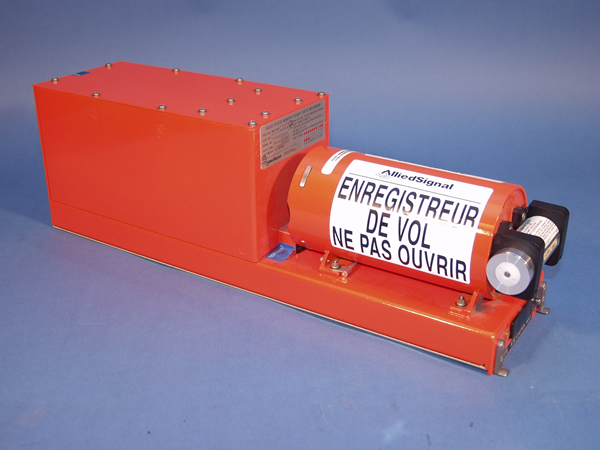It is well said that people who do not learn from their mistakes are doomed to repeat them. History can teach many valuable lessons if only we are willing to learn. Never forget, though, that history started a femtosecond ago. More realistically we can say that yesterday is now history.
My point is that even when we do not know the cause of an event we can still avoid its repetition if we take a rational view of the whole picture. The recent loss of Malaysia Airlines flight MH370 is a case in point. We don't know what went wrong on board, but we do know what went wrong with our safeguards against not knowing what happened. One lesson from history is that from time to time planes and ships mysteriously vanish. The lesson from yesterday - the loss of MH370 - is that the "black boxes" are not suited to the task if it takes far too long to know where to start searching for them.
The problem is in two parts: the battery life is too short and the "pings" are not uniquely identifiable as coming from any specific black box.

The Energy Price Of Data
The mathematical principles of encoding data into a signal are the same for both electromagnetic and acoustic signals. The most basic signal is a continuous carrier wave. This carries only the information inherent in the fact that a signal of a specific frequency is being transmitted. If the frequency is not being shared over the detection area then the signal can be triangulated by a searcher. In effect, any pure and continuous signal can only convey the simple idea of location.
The next step up is keyed or on/off transmission. Morse code is the classic example. Now, as soon as you impress data onto a signal carrier you increase its bandwidth. That is an unavoidable effect of the physics of communications. A pure sine wave transmission on a specific frequency is impossible in the real world, so a pure carrier will have error bars over its frequency, in other words a bandwidth. On/off keying introduces harmonics and distortion such as to greatly increase the bandwidth.
On/off keying, frequency modulation, amplitude modulation: all methods of impressing a signal onto a carrier increase the bandwidth of the carrier. Less widely appreciated is the fact that energy is required to transmit data and energy is required to increase bandwidth. What this means in practice is that for any given battery capacity its useful life before discharge is reduced as the carrier which it powers carries more data.
The black box identity signal problem
It would be useful to have a black box which sends out acoustic pings which identify the plane or ship. The problem is: we already know that a battery life of 30 days is too short. It would seem that we need to put bigger batteries in all the black boxes to extend the search time. From what we know about the relationship between data and power it would seem that the need for a bigger battery is unavoidable. As is so often the case, what seems to be a valid point turns out not to be the case.
Duty cycle and pulse position pinging
An acoustic pinger which emits a 1 second pulse every 10 seconds has a duty cycle of 1 to 9. To a close approximation a 1:9 duty cycle extends battery life by 10 times. In the real world the life extension is slightly more due to the non-linear relationship between current draw, time to discharge and duty cycle. The non-linearity was discovered by W. Peukert in 1897 and is expressed in Peukert's law.
Thanks to Peukert's law and other facts of electrochemistry, taken together with the physics of data transmission, we can add an identity feature to existing black boxes without loss of battery life. The trick is to use a numerically sequenced duty cycle as a variant of pulse position modulation. The way it can work is to take the last three digits of the data recorder's serial number as a set of specific timings in milliseconds and add them to the off part of the duty cycle. Thus, a series of 1 second pulses separated by gaps of 9.00 9.30 and 9.70 milliseconds would encode the three digit sequence 037 into a repeating ping pattern with no negative impact on battery life.
It might be useful also to add a timer which starts with the pinger and which counts off 15 days. After 15 days the off part of the duty cycle is doubled before the data carrying period is added. This gives an approximate battery life of 45 days without the need for a higher capacity battery. The power consumed by the pulse position time generator and the hours of use timer is negligible with modern ultra low power chips. The two functions could even be combined in a single chip. The same principle could be used to identify distress radiobeacons.
The duty cycle of the pinger relates to the speed of a search vessel listening for pings. This is the down side of extending the battery life by doubling the off period. After 15 days of searching the search would have to be conducted more slowly to allow for the sparseness of the signals as against time.
The proposed modification to flight data recorders could be carried out at relatively low cost by manufacturers, subject to approval by aviation safety authorities. The cost of this modification, or something having a similar effect, should be compared with the cost of searching for MH370.
The figure for the first month of the search is already about equal to the official 32 million euros ($44 million) spent in searches lasting several months spread over a two-year time frame for Air France's Flight AF447, which crashed into the Mid-Atlantic in 2009.
Reuters.



Comments